An Investigation of Channeling Identification for the Thermal Recovery Process of Horizontal Wells in Offshore Heavy Oil Reservoirs
Abstract
1. Introduction
2. Inter-Well Injection–Production Performance
2.1. Normal Steam Injection Stage
2.2. Injection–Production Interference Stage
2.3. Injection–Production Channeling Stage
3. Channeling Identification Method
3.1. Construction of the Steam Channeling Identification Chart
3.2. Injection–Production Performance Curve
4. Field Application
4.1. Production Performance of Typical Wells
4.2. Channeling Identification of Typical Wells
5. Model Limitation
6. Conclusions
- (1)
- Based on the method of equivalent seepage resistance, the equations of injection performance are derived for the normal steam injection stage, injection–production interference stage, and injection–production channeling stage.
- (2)
- According to the derived slope expression of CIPPD over CWE for the injection–production interference stage and injection–production channeling stage, the chart of the slope with varied production–injection ratios is obtained; thus, the steam channeling identification chart is constructed. The chart consists of the energy recharge zone, the interference zone, and the channeling zone.
- (3)
- The illustrations of the channeling identification chart for two typical wells from the Bohai oilfield show that Well X1 exhibits no channeling and Well X2 exhibits channeling in the late stage of the steam flooding process, which are consistent with the production performance of these two actual wells.
- (4)
- The approach proposed in this paper is recommended for channeling identification in homogenous and isotropic reservoirs, and the effect of steam overlay is ignored. The authors also recommend applying the model to the channeling identification for onshore reservoirs by considering the reservoir characteristics and well pattern.
Author Contributions
Funding
Data Availability Statement
Conflicts of Interest
Nomenclature
| Acronym | |
| BHFP | Bottom-hole flowing pressure |
| BHFT | Bottom-hole flowing temperature |
| CIPPD | Cumulative injection–production pressure differential |
| CMTFS | Cyclic multicomponent thermal fluid stimulation |
| CSS | Cyclic steam stimulation |
| CWE | Cumulative water equivalent |
| Sets and indices | |
| o, s, w | Oil phase, steam phase, and water phase |
| 1, 2, 3 | Normal injection stage, interference stage, and channeling stage |
| Parameters | |
| h | Reservoir thickness, m |
| b3 | Equivalent width of the high-permeability streaks, m |
| D | Well spacing between the injector and productor, m |
| q | Fluid production/injection rate, m3/d |
| K | Effective phase permeability, mD |
| pa | Average formation pressure, MPa |
| pw | Bottom-hole pressure, MPa |
| L | Well length of the horizontal section, m |
| μ | Fluid viscosity, mPa·s |
| B | Fluid volume factor, m3/m3 |
| rw | Radius of the wellbore, m |
| S | Skin factor |
| a | Half of the major axis of a drainage ellipse in a horizontal plane, m |
| pwc | Casing pressure of the injection well, MPa |
| H | Vertical depth of the well, m |
| Lw | Fluid level depth of the injection well, m |
| pp | Bottom-hole pressure of the production well, MPa |
| ppc | Casing pressure of the production well, MPa |
| Lp | Fluid level depth of the production well, m |
| J | Productivity index, m3/(d·MPa) |
| ρ | Fluid density, kg/m3 |
| Rct | Production–injection ratio, m3/m3 |
| m | Slope of CIPPD over CWE, (d·MPa)/m3 |
| τ | Time, d |
References
- Hein, F.J. Heavy oil and oil (tar) sands in North America: An overview & summary of contributions. Nat. Resour. Res. 2006, 15, 67–84. [Google Scholar]
- Carpenter, C. Offshore heavy oil polymerflooding pilot reveals alternative paths. J. Pet. Technol. 2021, 73, 49–50. [Google Scholar] [CrossRef]
- Salimi, H.; Sieders, B.; Rostami, J. Non-isothermal compositional simulation study for determining an optimum EOR strategy for a middle-east offshore heavy-oil reservoir with compositional variations with depth. In Proceedings of the SPE EOR Conference at Oil and Gas West Asia, Muscat, Oman, 21–23 March 2022. [Google Scholar]
- Sun, F.; Su, Y.; Zheng, W.; Yang, R.; Zheng, Q.; Yu, J.; Yang, Z.; Wang, T. Technology progress and development direction for thermal recovery of offshore heavy oil reservoirs. China Offshore Oil Gas 2025, 37, 142–151. [Google Scholar]
- Tian, J. Geological Reservoir Modeling for Thermal EOR in Offshore Heavy Oil Fields: Design Practices and Case Studies; Sinopec Press: Beijing, China, 2019. [Google Scholar]
- Niu, J.; Huang, H.; Jiang, W. Geochemical characteristics and correlation of continuous charge mixing and biodegradation of heavy oil in southeastern Dongying Sag, Bohai Bay basin, China. J. Pet. Sci. Eng. 2018, 166, 1–12. [Google Scholar] [CrossRef]
- Li, Z.; Sun, Y.; Lu, T.; Hou, D.; Li, B.; Li, S. Three-Dimensional physical simulation of thermochemical flooding for offshore heavy oil. J. China Univ. Pet. (Ed. Nat. Sci.) 2020, 44, 85–90. [Google Scholar]
- Zhang, F.; Jiang, W.; Sun, F.; Zhou, S. Key technology research and field test of offshore viscous polymer flooding. Strateg. Study CAE 2011, 13, 28–33. [Google Scholar]
- Shi, L.; Liu, C.; Chen, M.; Hua, Z.; Ye, Z.; Zhang, J. Synthesis and evaluation of a hyperbranched copolymer as viscosity reducer for offshore heavy oil. J. Pet. Sci. Eng. 2021, 196, 108011. [Google Scholar] [CrossRef]
- Shi, C.; Meng, F.; Zhang, H.; Chang, H.; Zhong, X.; Gong, J.; Li, F. A Model for the Connectivity of Horizontal Wells in Water-Flooding Oil Reservoirs. Fluid Dyn. Mater. Process. 2022, 18, 1441–1468. [Google Scholar] [CrossRef]
- dos Santos Heringer, J.D.; de Souza, G.; Amaral Souto, H.P.; Pires, A.P. On the numerical simulation of non-isothermal heavy oil flow using horizontal wells and horizontal heaters. Braz. J. Chem. Eng. 2024, 41, 179–196. [Google Scholar] [CrossRef]
- Wang, B.; Huang, S.; Zhao, F.; Su, Z.; Fan, X.; Yang, M. Investigating the heated zone evolution and production performance of cyclic steam stimulation with horizontal well in thick-layer heavy oil reservoirs. Geoenergy Sci. Eng. 2024, 241, 213108. [Google Scholar] [CrossRef]
- Liu, X.; Tian, J.; Li, N.; Wang, L.; Cai, L. Economic limits of thermal recovery in offshore heavy oil reservoir. Spec. Oil Gas Reserv. 2016, 23, 106–109. [Google Scholar]
- Liu, X.; Zhang, F.; Huang, K.; Cui, D.; Huang, Y.; Miu, F. Discussion about the thermal recovery of NB35-2 offshore heavy oilfield. Reserv. Eval. Dev. 2011, 1, 61–63. [Google Scholar]
- Sun, T. Multicomponent thermal fluid recovery technology of offshore heavy oil. Chem. Eng. Manag. 2021, 18, 88–89. [Google Scholar]
- Cai, H.; Zou, J. Technical challenges, current situation, and prospects of thermal recovery of heavy oil in Bohai oilfield. China Offshore Oil Gas 2024, 36, 157–169. [Google Scholar]
- Zheng, W.; Tan, X.; Jiang, W.; Xie, H.; Pei, H. Investigation of nanoclay-surfactant-stabilized foam for improving oil recovery of steam flooding in offshore heavy oil reservoirs. ACS Omega 2021, 6, 22709–22716. [Google Scholar] [CrossRef] [PubMed]
- Rong, K.; Gong, R.; Huang, Z.; Liu, G. Evaluation and study of steam flooding plugging system for offshore heavy oil horizontal wells. Petrochem. Ind. Appl. 2020, 39, 14–19. [Google Scholar]
- Zhao, D.; Hou, J.; Sun, J.; Shi, L.; Du, Q.; Li, J. Interwell connectivity inversion method of steam flooding: Based on an analytical model and genetic algorithm. J. Pet. Sci. Eng. 2022, 215, 110641. [Google Scholar] [CrossRef]
- Dong, X.; Liu, H.; Chen, Z.; Wu, K.; Lu, N.; Zhang, Q. Enhanced oil recovery techniques for heavy oil and oilsands reservoirs after steam injection. Appl. Energy 2019, 239, 1190–1211. [Google Scholar] [CrossRef]
- Zhang, J.; Wu, Y.; Wang, C.; Liu, P.; Zhao, F.; Xi, C.; Liu, P. Synergistic improvement of sweep efficiency by urea in-situ decomposition and foaming agent in steam flooding for heavy oil reservoirs. Geoenergy Sci. Eng. 2025, 249, 213788. [Google Scholar] [CrossRef]
- He, Z.; Xu, H.; Ding, C. Ground steam channeling Chong32 well block and its plugging measures. Nat. Gas Explor. Dev. 2013, 36, 61–63. [Google Scholar]
- Huo, J.; Sang, L.; Li, J.; Zhang, Y.; Yang, Y. Using interwell electric potential monitoring technique to control surface steam breakthrough in heavy-oil reservoir of Zhong-32 Wellblock in Junggar Basin. Xinjiang Pet. Geol. 2012, 33, 495–496. [Google Scholar]
- Cao, X.; Wang, L.; Yu, Z. Application of tracer monitoring technology in reservoir homogeneity and reservoir connectivity. Unconv. Oil Gas 2019, 6, 71–76. [Google Scholar]
- Wen, S.; Xie, S.; Meng, K.; Wang, Y.; Shi, X. A fast evaluation method of water breakthrough channels based on tracer monitoring. Liaoning Chem. Ind. 2018, 47, 554–558. [Google Scholar]
- Liu, W.; Yi, F.; He, R.; Zhao, X. A Research and Application for a Technique of Tracer Injecting, Testing and Interpretation in Bohai Oilfields with Water-Flooding Development; China Offshore Oil and Gas: Beijing, China, 2005; pp. 245–250. [Google Scholar]
- Zeng, Y.; Kang, X.; Xie, X.; Shi, Y. Well-test interpretation method of the polymer-flooding high capacity channel oil reservoir. Pet. Geol. Oil Dev. Daqing 2018, 37, 130–134. [Google Scholar]
- Shen, W.; Zhao, H.; Liu, W.; Xu, L.; Liao, M. Identification method of dominant channeling in fractured vuggy carbonate reservoir based on connectivity model. Fault-Block Oil Gas Field 2018, 25, 459–463. [Google Scholar]
- Wu, M.; Xu, S.; Ding, M.; Zhao, G. Well testing interpretation model and dynamic pressure characteristics of horizontal well heavy oil thermal recovery in carbonate reservoir. Well Test. 2017, 26, 1–6. [Google Scholar]
- Bi, J.; Li, J.; Wu, K.; Chen, Z.; Chen, S.; Jiang, L.; Feng, D.; Deng, P. A physics-informed spatial-temporal neural network for reservoir simulation and uncertainty quantification. SPE J 2024, 28, 2026–2043. [Google Scholar] [CrossRef]
- Shen, L.; Li, D.; Zha, W.; Li, X.; Liu, X. Surrogate modeling for porous flow using deep neural networks. J. Pet. Sci. Eng. 2022, 213, 110460. [Google Scholar] [CrossRef]
- Wang, X. Research on Prediction of Steam Channeling in Steam Flooding Based on Machine Learning. Master’s Thesis, Dissertation, China University of Petroleum (East China), Dongying, China, 2022. [Google Scholar]
- Song, B.; Wang, R.; Ma, L.; Wei, Z.; Jia, Y.; Liu, H. Machine learning-based steam channeling identification for steam injection of heavy oil reservoirs. Oil Drill. Prod. Technol. 2022, 44, 777–783. [Google Scholar]
- Jeong, S.; Chung, S.; Min, B.; Kang, J.M.; Park, C. Optimal operation of Fast-SAGD process considering steam channeling among vapor chambers. In Proceedings of the ISOPE International Ocean and Polar Engineering Conference, Anchorage, Alaska, 30 June–5 July 2013. [Google Scholar]
- Zheng, Q.; Liu, H.; Li, F.; Wang, Q.; Wang, C.; Lu, C. Quantitative description of steam channels after steam flooding. Sci. China Technol. Sci. 2013, 56, 1164–1168. [Google Scholar] [CrossRef]
- Wu, K.; Li, X.; Quan, Y.; Guan, W. Forecast model for steam breakthrough during steam drive exploration of inspissated pool. Syst. Eng.—Theory Pract. 2014, 34, 538–544. [Google Scholar]
- Wang, X.; Qi, Y.; Zhuo, Z.; Yang, C. Exploration and application of heavy oil thermal recovery technology in offshore oilfields. Henan Sci. Technol. 2019, 5, 55–56. [Google Scholar]
- Vidal, P.D.C.J.; González, M.O.A.; de Vasconcelos, R.M.; de Melo, D.C.; de Oliveira Ferreira, P.; Sampaio, P.G.V.; da Silva, D.R. Decommissioning of offshore oil and gas platforms: A systematic literature review of factors involved in the process. Ocean Eng. 2022, 255, 111428. [Google Scholar] [CrossRef]
- Liu, Y.; Li, Y.; Jiang, S.; Li, S.; Zhang, L.; Zhang, C.; Liu, D. An application of Hall curve to thermal recovery wells in Bohai oilfields. China Offshore Oil Gas 2013, 25, 43–45. [Google Scholar]
- Yan, K.; Han, P.; Xie, K.; Meng, L.; Cao, W.; Cao, R.; Zhang, T.; Li, X.; Li, S. Identification and characterization of dominant seepage channels in oil reservoirs after polymer flooding based on streamline numerical simulation. Alex. Eng. J. 2024, 106, 704–720. [Google Scholar] [CrossRef]
- Xu, C.; Wang, B.; Wang, F.; Wan, L.; Zhang, R. Neogene extra heavy oil accumulation model and process in Liaodong Bay depression: A case study of Lvda 5-2 N oilfield. Acta Pet. Sin. 2016, 37, 599–609. [Google Scholar]
- Xue, Y.; Deng, Y.; Wang, D.; Yang, H.; Lv, D.; Kang, K. Hydrocarbon accumulation conditions and key exploration and development technologies for PL 19–3 oilfield. Pet. Res. 2019, 4, 29–51. [Google Scholar] [CrossRef]
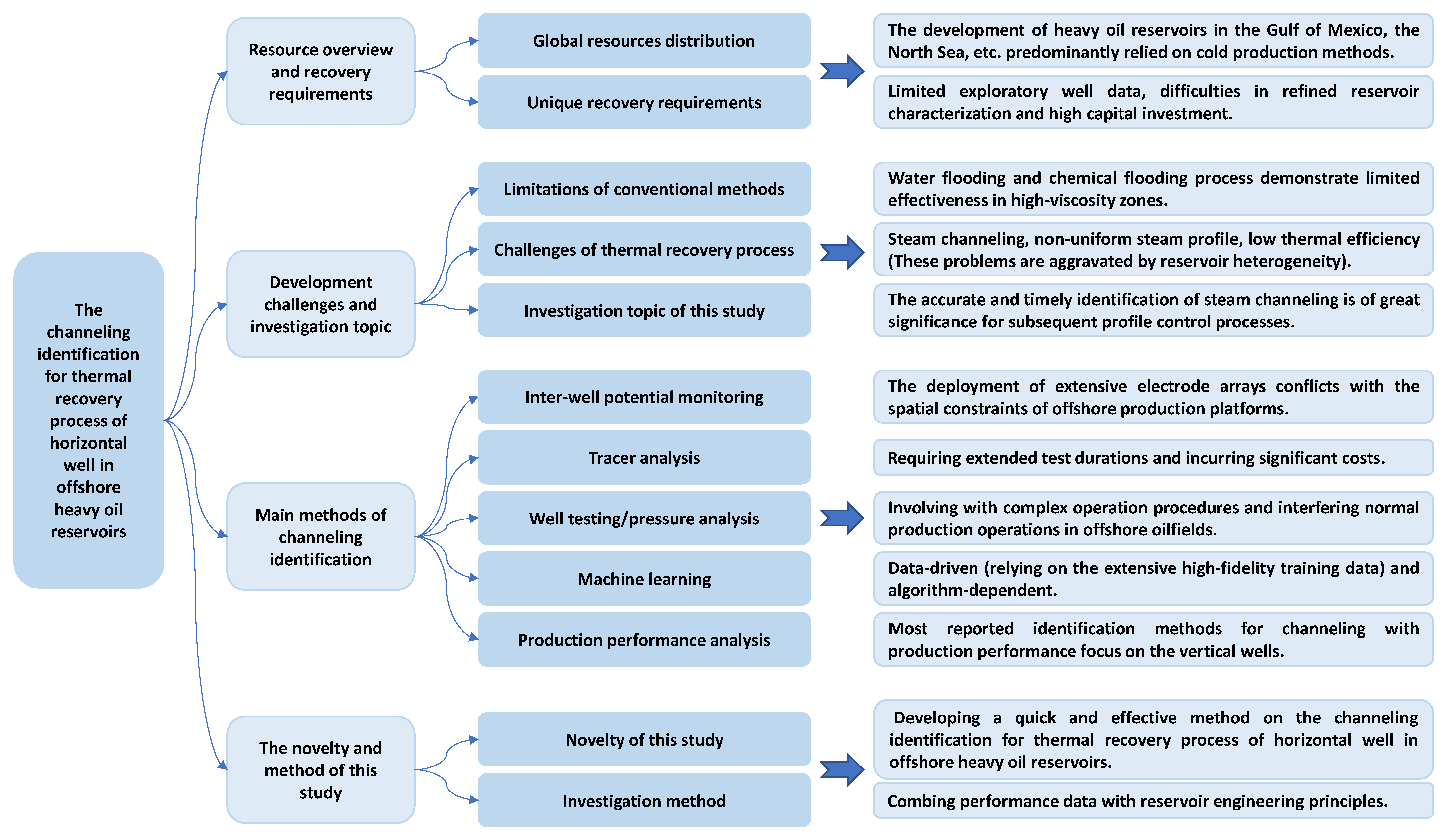
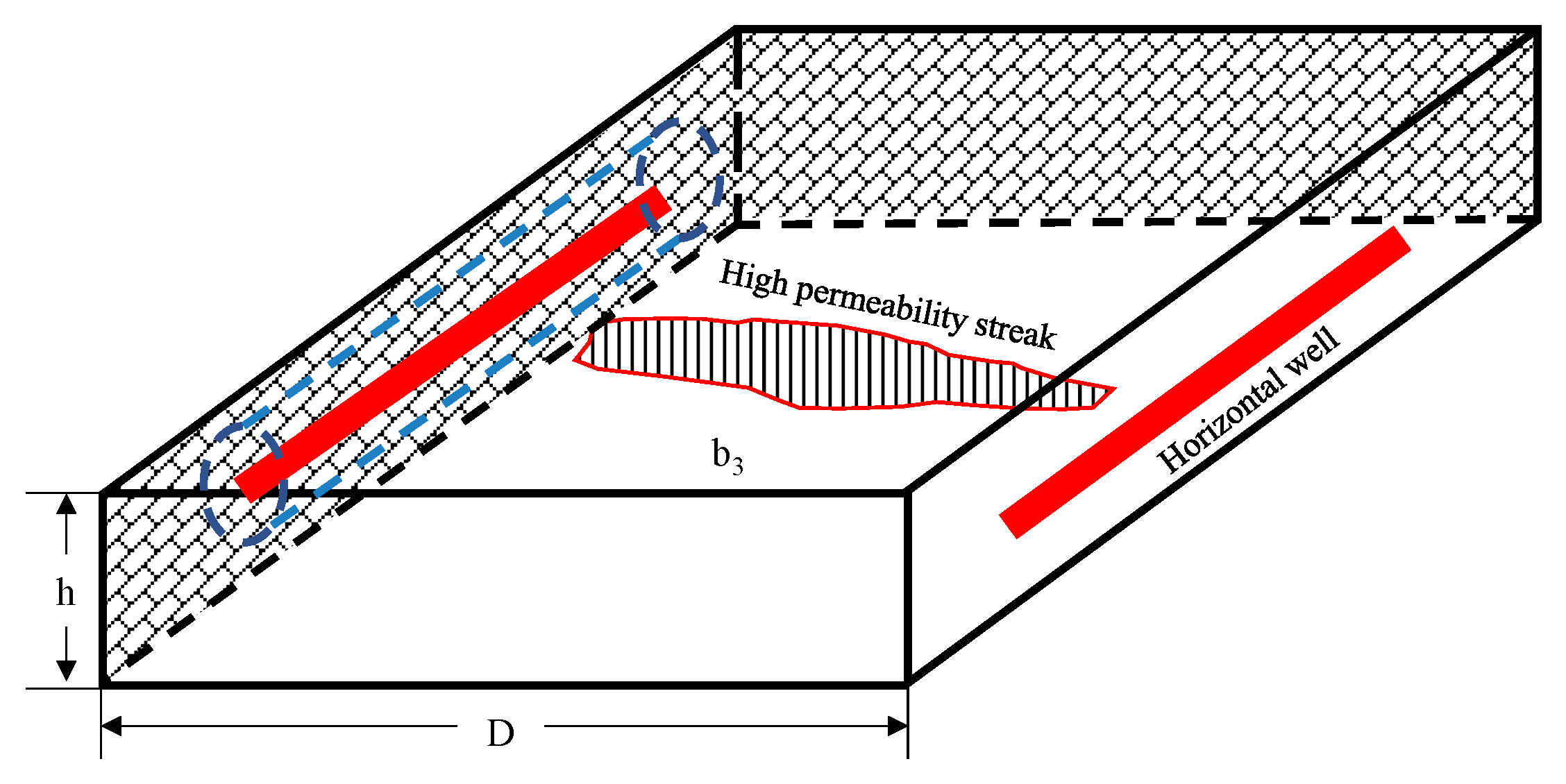
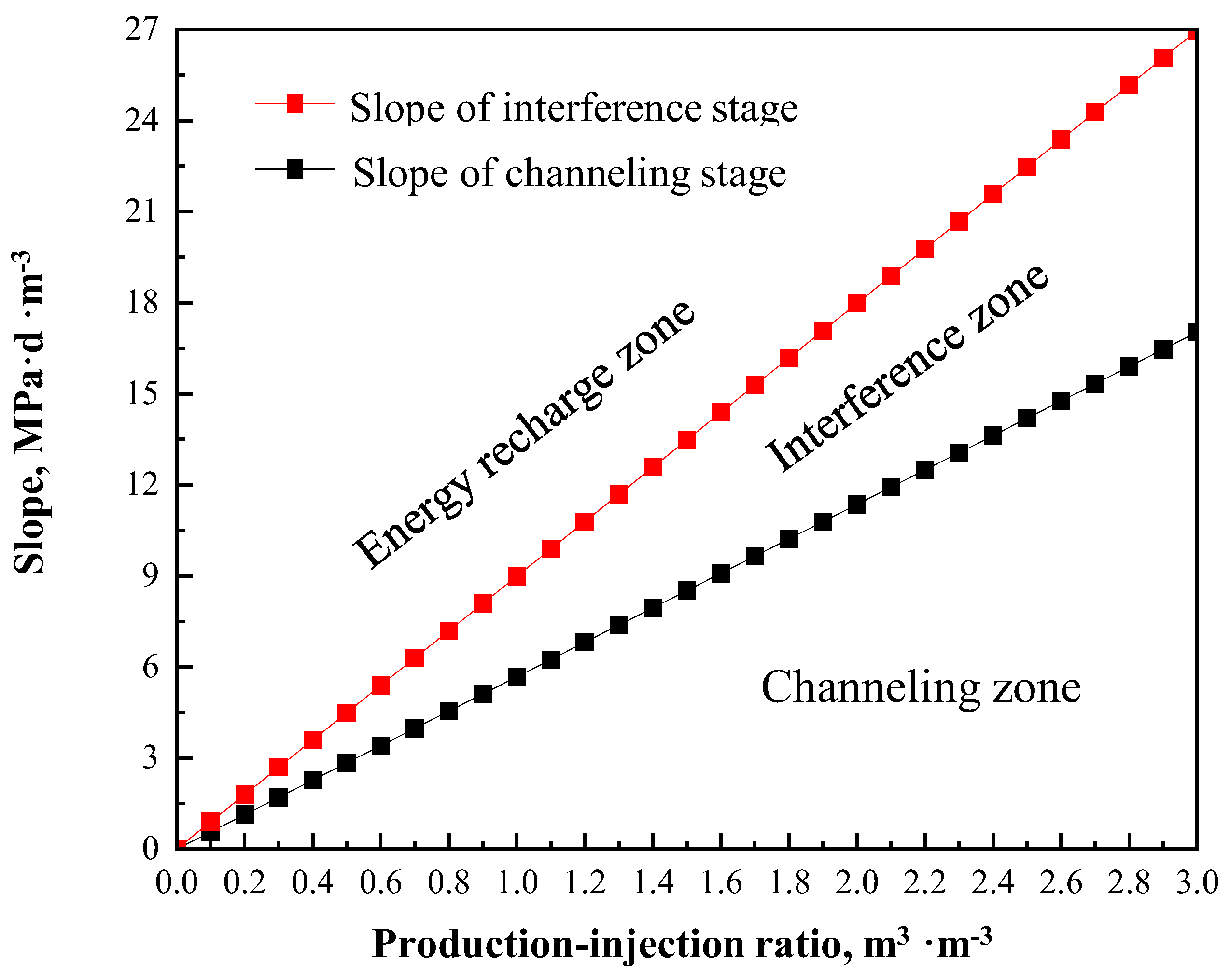
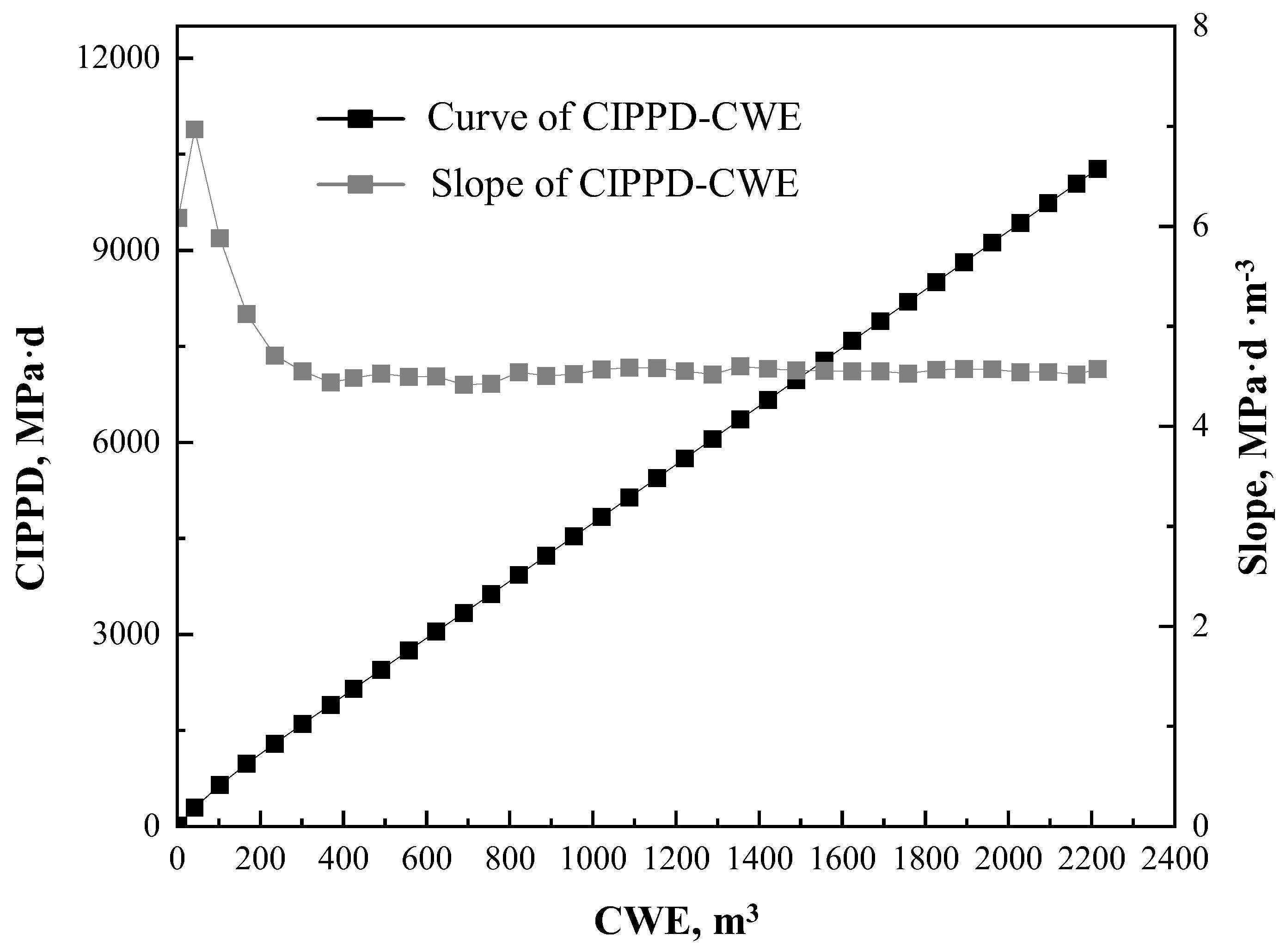
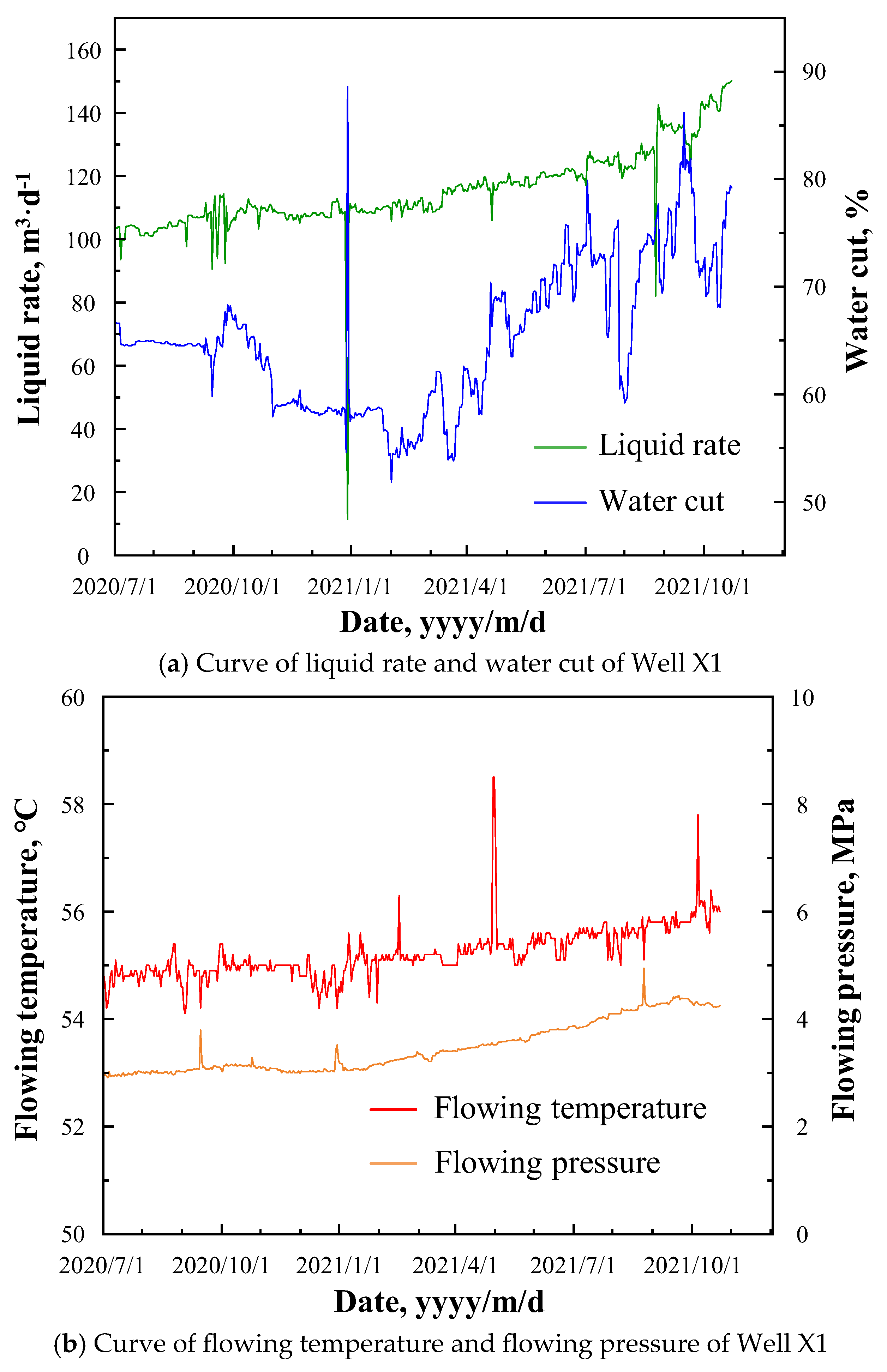
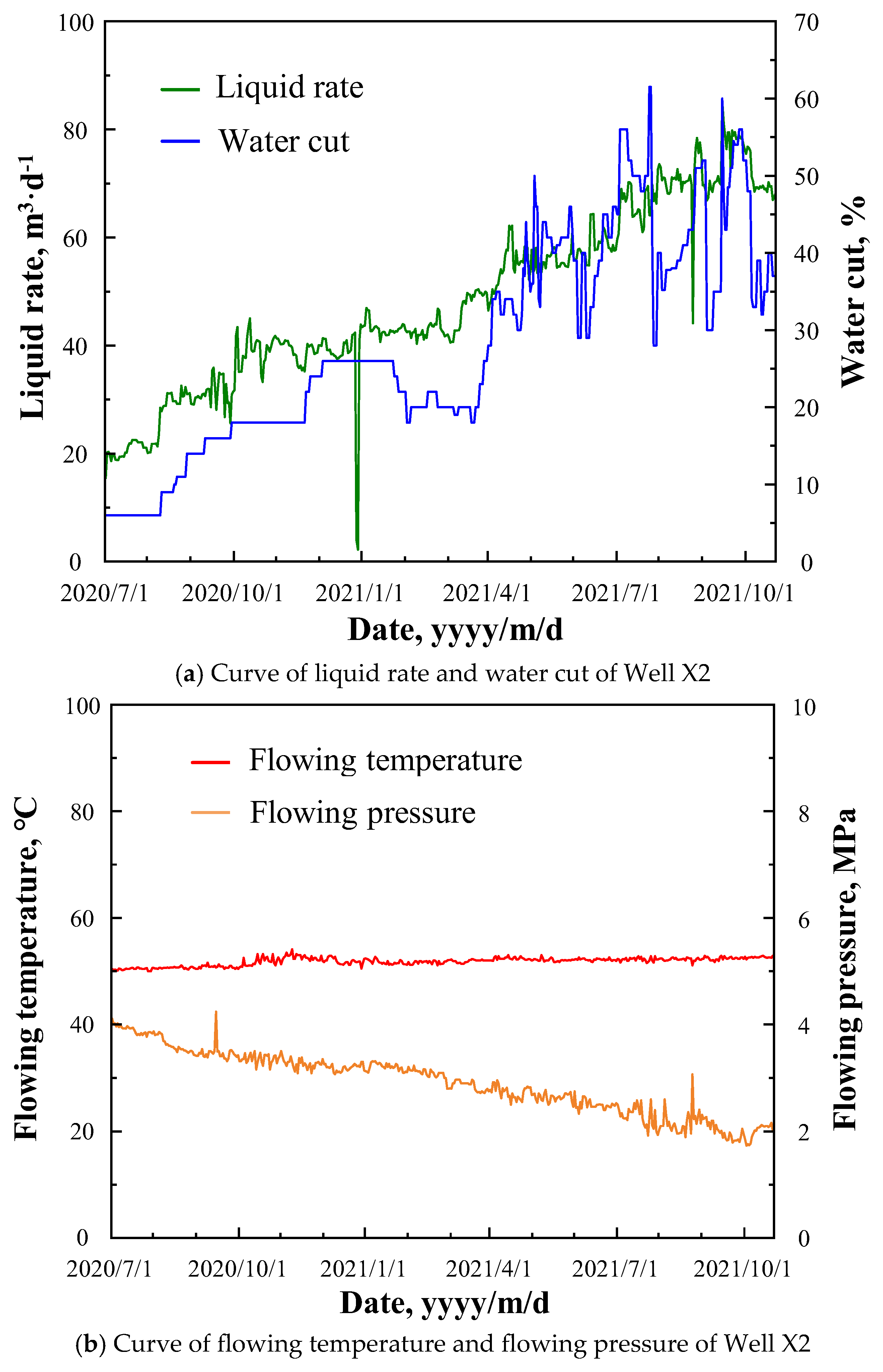
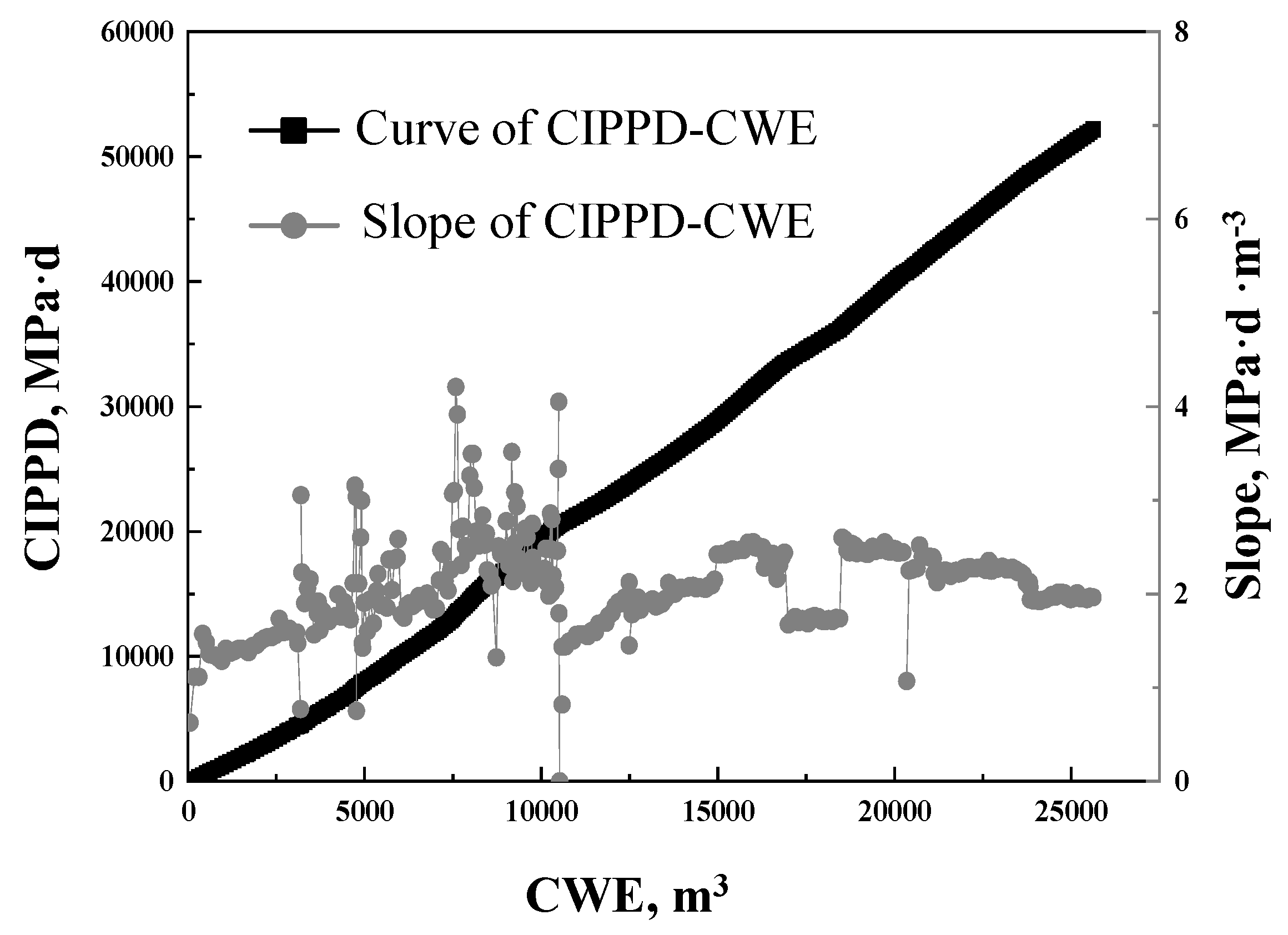

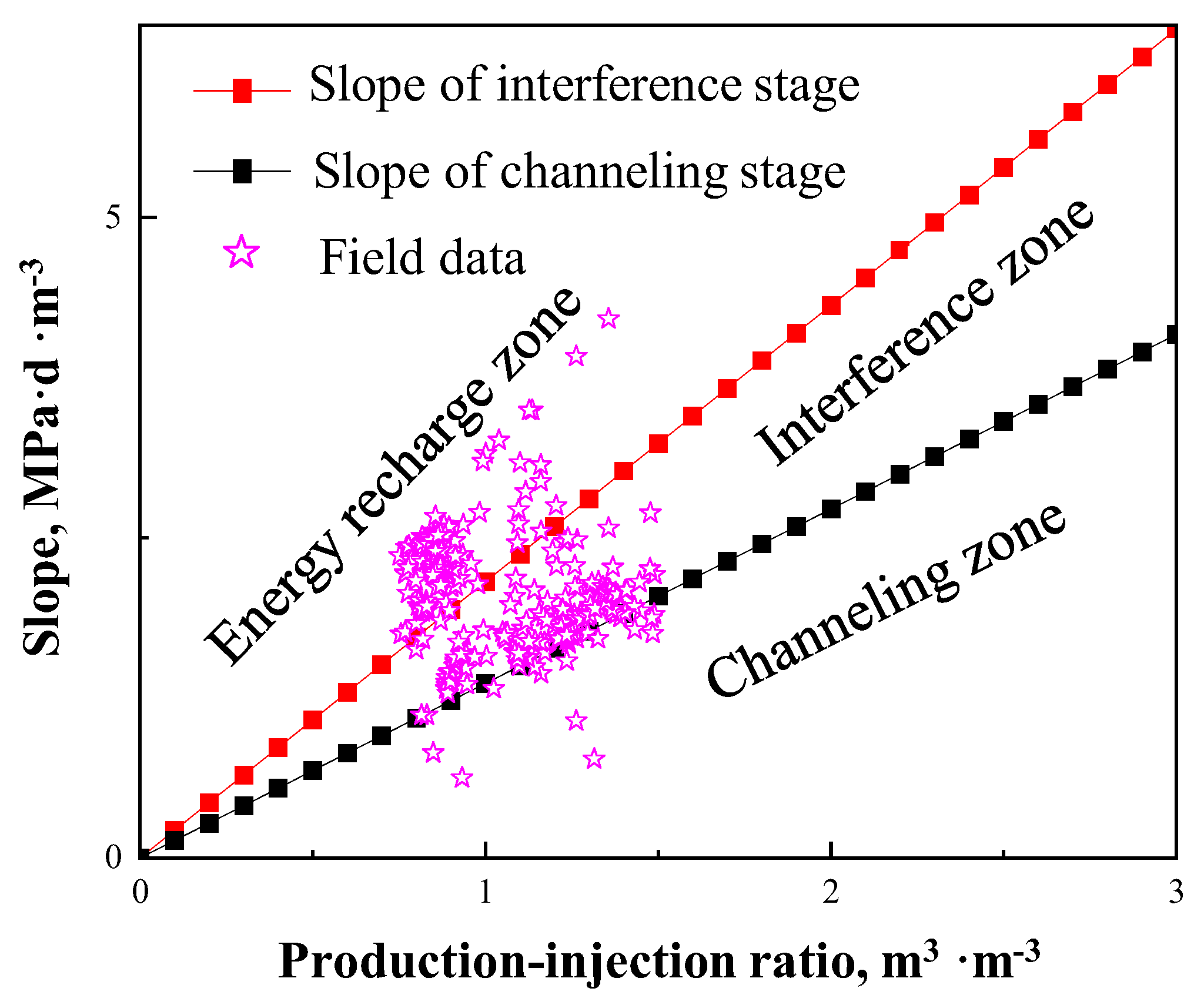
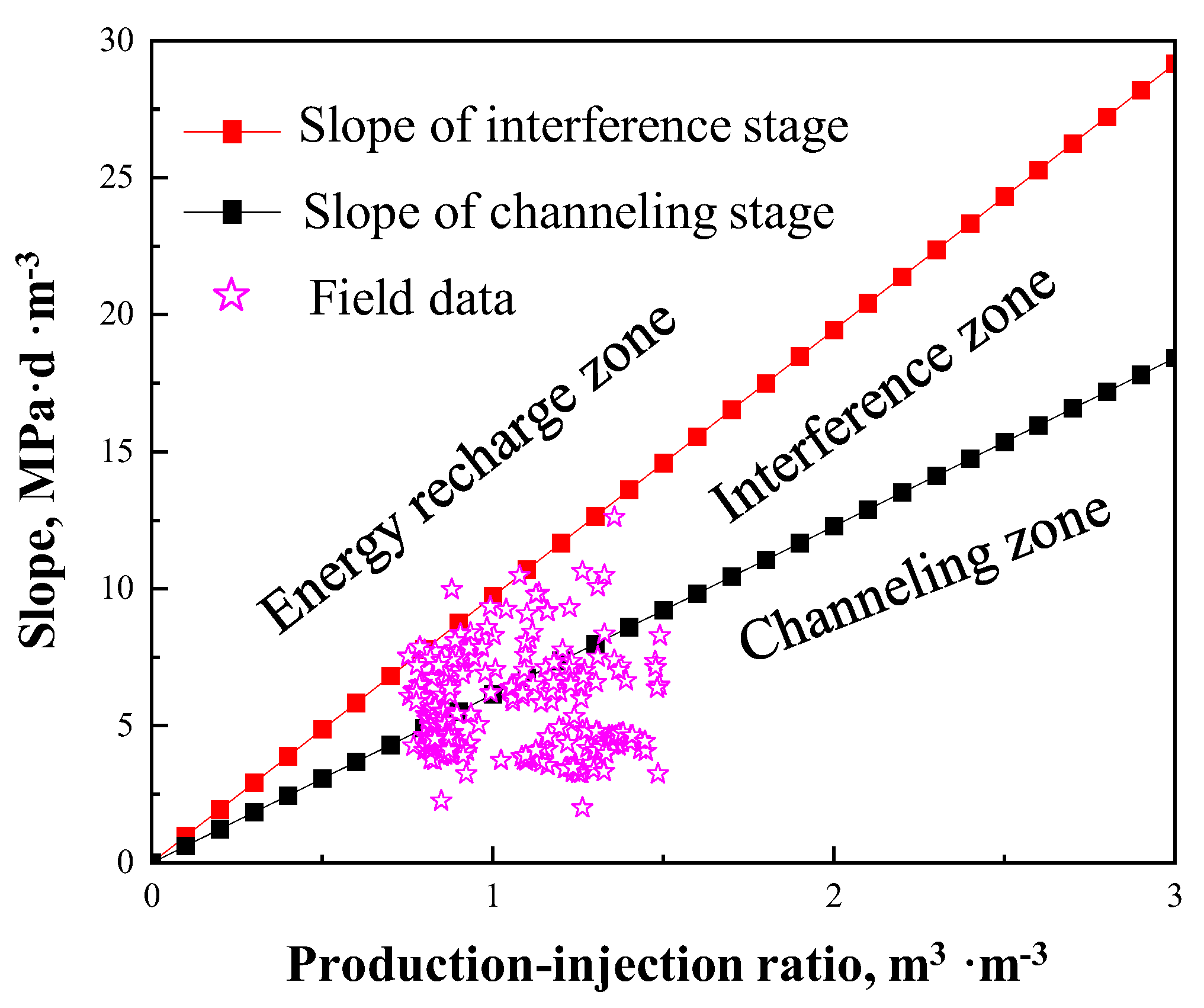
Disclaimer/Publisher’s Note: The statements, opinions and data contained in all publications are solely those of the individual author(s) and contributor(s) and not of MDPI and/or the editor(s). MDPI and/or the editor(s) disclaim responsibility for any injury to people or property resulting from any ideas, methods, instructions or products referred to in the content. |
© 2025 by the authors. Licensee MDPI, Basel, Switzerland. This article is an open access article distributed under the terms and conditions of the Creative Commons Attribution (CC BY) license (https://creativecommons.org/licenses/by/4.0/).
Share and Cite
Yang, R.; Wang, T.; Zhang, L.; Feng, Y.; Liu, H.; Dong, X.; Zheng, W. An Investigation of Channeling Identification for the Thermal Recovery Process of Horizontal Wells in Offshore Heavy Oil Reservoirs. Energies 2025, 18, 3450. https://doi.org/10.3390/en18133450
Yang R, Wang T, Zhang L, Feng Y, Liu H, Dong X, Zheng W. An Investigation of Channeling Identification for the Thermal Recovery Process of Horizontal Wells in Offshore Heavy Oil Reservoirs. Energies. 2025; 18(13):3450. https://doi.org/10.3390/en18133450
Chicago/Turabian StyleYang, Renfeng, Taichao Wang, Lijun Zhang, Yabin Feng, Huiqing Liu, Xiaohu Dong, and Wei Zheng. 2025. "An Investigation of Channeling Identification for the Thermal Recovery Process of Horizontal Wells in Offshore Heavy Oil Reservoirs" Energies 18, no. 13: 3450. https://doi.org/10.3390/en18133450
APA StyleYang, R., Wang, T., Zhang, L., Feng, Y., Liu, H., Dong, X., & Zheng, W. (2025). An Investigation of Channeling Identification for the Thermal Recovery Process of Horizontal Wells in Offshore Heavy Oil Reservoirs. Energies, 18(13), 3450. https://doi.org/10.3390/en18133450




